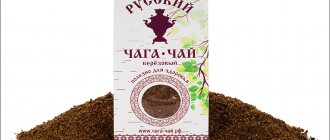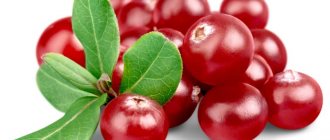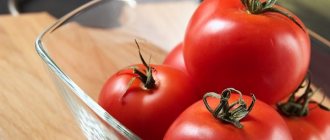Is it possible to have salads for gastritis?
The word “salad” in cooking refers to cold dishes made from various products with dressing. They are prepared from a variety of products, these can be vegetables, meat products, fish, and cheese. For gastritis, it is allowed to include only dietary foods and dishes in the diet.
They should not contain ingredients that irritate the gastric mucosa. Therefore, you will have to give up heavy multi-layer snacks, in which each layer is sandwiched with a large amount of mayonnaise. Such food is difficult to digest and can cause heartburn even in healthy people.
When preparing salads for a patient with gastritis, it is recommended to choose only dietary products of impeccable quality
In addition, if you have gastritis with high acidity, you should avoid snack foods that are seasoned with lemon juice and vinegar. Do not use too hot seasonings. For this reason, all Korean snacks with sour and spicy dressings fall into the prohibited section.
Is it possible to eat salads with gastritis of the stomach and what kind? These are dishes made from boiled and fresh vegetables, lean meat products and fish. Refined vegetable oil, not sour and not too fatty sour cream are used as a dressing. Unrefined vegetable oil is considered the healthiest, but it is not recommended for people with gastritis to season dishes, as the oil can irritate the stomach.
To prepare salads for a patient with gastritis, it is recommended to choose only dietary products of impeccable quality. Everything should be fresh and good quality. You should not prepare snacks for future use for two or three days; they should be eaten immediately after preparation.
What products can be used to prepare salads for patients with gastritis:
- Vegetables: This is usually a must-have ingredient. It is allowed to use boiled vegetables - potatoes, carrots, green beans, broccoli and cauliflower. Fresh vegetables are used with caution as they may cause bloating due to gas formation. To prepare snacks, you can use peeled cucumbers, raw carrots, fresh tomatoes without skin and seeds. However, if you experience abdominal discomfort after eating one of the listed varieties of vegetables, you will have to stop using it;
- fruits: if you have gastritis, not all fruits can be eaten. It is allowed to use pears, apples (sweet varieties), apricots, persimmons, and watermelon. It is better to remove the skin from the fruit. If you are intolerant to fresh fruits, you can prepare a salad of baked pears and apples;
- meat products: you can use lean meat - veal, turkey, rabbit. The meat is pre-boiled and cooled. Good quality doctor's boiled sausage can be used to add to salads;
- seafood and fish: it is recommended to choose low-fat fish; this ingredient is used boiled. You can use boiled shrimp, squid, mussels;
- greens : it is allowed to use lettuce leaves, dill, parsley, spinach;
- dressing: it is best to use refined oil, low-fat sour cream, natural yogurt. Spices are added in minimal quantities.
What salads can you eat if you have gastritis?
The main requirement for dishes with gastritis, including salads, is that they do not irritate the gastric mucosa. This means that salads for gastritis should not contain spicy vegetables, such as radish, horseradish or pepper. In addition, the salad should not overload the stomach and be too filling, and should not lead to excessive gas formation.
Therefore, if you have gastritis, you should not put a lot of potatoes, eggs, meat, green peas or mayonnaise in salads. Smoked and pickled foods, as well as all kinds of delicacies, such as Japanese, Korean or Chinese salads, are harmful for gastritis. And finally, all salads for gastritis must be absolutely fresh, therefore, they must be eaten immediately after preparation.
All products that you put in the salad should be the freshest and well chopped. The main task for gastritis is to facilitate the digestion process as much as possible. Vegetables and fruits need to be peeled because they consist of coarse fibers that will irritate the stomach lining. For the same reason, it is recommended not to salt salads, or at least not to over-salt them.
For gastritis with high acidity, it is recommended to take vegetables for salads boiled or steamed. If the acidity is low, then on the contrary, fresh vegetables will be the most useful. If we are talking about fruit salads, then you need to completely exclude hard or sour fruits and berries. For gastritis, it is recommended to eat only tender and sweet fruits that will not irritate the gastric mucosa.
Recommended herbs are dill or parsley. Salads should be dressed with low-fat yogurt or refined vegetable oil. And, of course, vinegar or lemon juice should be completely excluded from the dressing. If you add meat to the salad, then you need to take lean beef, veal, poultry or rabbit. Fish can also be exclusively low-fat varieties - cod, pollock, hake or trout. Any kind of seafood is suitable, the most important thing is that they are not marinated, but boiled.
A little history and interesting facts about beets
If we turn to history, we will find that in the Middle Ages, the Eastern Slavs sincerely believed: beets can protect the human body even from the plague!
This belief was explained very simply - the plague epidemic never managed to “swallow” the peoples of Eastern Europe (who passionately loved beets), although in Western Europe the plague raged in full. As we said above, modern researchers have not yet found in beets the miraculous properties that our ancestors endowed them with, but it is reliably known that this root vegetable contains substances that can effectively fight cancer cells. True, the vast majority of vegetables and fruits have anti-cancer properties, so beets cannot stand out with this fact.
Hence the conclusion: fresh beet leaves should not be thrown away, but eaten as a salad, or in some other way... By the way, this is exactly what people did in ancient times. At first, only wild plants were eaten, but a little later - around the second millennium BC - Swiss chard began to be cultivated. Well, for the sake of root crops, beets began to be grown only in the 4th century BC. (on the islands of the Mediterranean Sea).
Beet root crops came to Russian lands around the 10th century AD. In Western Europe, beets appeared three centuries later. Three centuries later, beets began to be divided into fodder and table beets, and in the 18th century, sugar beets were also separated.
Nowadays, beets are eaten everywhere, both by people and pets. And about a third of all sugar in the world is now produced from sugar beets.
Salad recipes for gastritis
There are a number of foods that should never be consumed if gastritis is diagnosed. Vinegar should not be used when preparing salads. You should exclude fast food and any processed foods from your diet. Sausages, sausages, crackers and chips contain many harmful additives that negatively affect the gastric mucosa. You cannot prepare a salad from sauerkraut if you have gastritis. All acidic foods are contraindicated.
You can't eat too hot spices. Bitter vegetables such as radishes, onions, radishes and garlic contribute to irritation of the mucous membranes. That is why they should not be added to salads. Peas are also prohibited. The thing is that this product can cause severe flatulence.
Experts advise chopping all foods as finely as possible during cooking. This way the food will be digested faster and easier. Don't use too much salt. This will have a negative effect on your stomach. Food must be seasoned immediately before serving. If this is done in advance, then the salad will most likely have time to oxidize under the influence of air and will no longer be so healthy.
Experts advise chopping all foods as finely as possible during cooking so that the food will be digested faster and easier.
Salad with white cabbage for gastritis
Ingredients: 200 g white cabbage, 20 g dill, 40 g sour cream, 6 g sugar, 2 g salt.
After removing the top limp and contaminated leaves, wash the white cabbage, cut it into two parts, chop it, and put it in a salad bowl. Sprinkle with salt and stir, rubbing lightly. Leave for 30 minutes to soften, then season with sour cream mixed with sugar. Before serving, sprinkle with chopped dill.
Beetroot salad with prunes for gastritis
Ingredients: 200 g boiled beets, 60 g prunes, 4 g sugar, 20 g vegetable oil, 1 g salt.
Wash the prunes, pour boiling water over them and leave to soak for 1 hour. After this, place in a colander, let drain, remove the seeds, and chop finely. Peel the boiled beets, grate them on a fine grater, mix with prunes, add sugar and salt, and put in a salad bowl. Season with vegetable oil.
Kohlrabi and apple salad for gastritis
Wash the kohlrabi, remove the peel and grate the woody areas on a coarse grater
Ingredients: 200 g kohlrabi, 100 g apples (sweet varieties), 20 g vegetable oil, 1 g salt.
Wash the kohlrabi, remove the skin and woody areas, and grate on a coarse grater. Wash the apple, remove the core and seeds, chop and mix with kohlrabi. Salt the salad and season with vegetable oil.
Vegetable vinaigrette for gastritis
Ingredients: 100 g beets, 100 g carrots, 120 g potatoes, 40 g green onions, 80 g pickles, 50 g sauerkraut, 20 g vegetable oil, 0.5 g lemon juice, 2 g sugar, 4 g salt.
Boil potatoes, beets, carrots in their skins, then cool and peel, cut into slices, cucumbers into slices. Combine the prepared vegetables with sauerkraut, sprinkle with lemon juice, mix and season with vegetable oil, sugar and salt. Place in a salad bowl in a heap, sprinkle with chopped green onions.
Olivier recipe for gastritis
A diet for gastritis does not exclude the use of Olivier. However, when preparing this dish, you must adhere to several important rules. This salad includes 2 medium potatoes, 2 eggs, 200 g chicken meat, 1 carrot, 1 medium-sized apple, 1 fresh cucumber, canned peas and 5 tablespoons of low-fat sour cream.
Diet for gastritis does not exclude the use of Olivier
Chicken fillet, potatoes, carrots and eggs need to be thoroughly boiled and cut into cubes. After this, you need to add chopped and peeled cucumber and apple to the crushed products. Next, add peas, sour cream and a little salt to the salad. Everything gets mixed up. The healthy salad is ready.
Eggplant caviar
Ingredients: 200 g eggplants, 40 g onions, 90 g fresh tomatoes, 20 g vegetable oil, 10 g green onions, 4 g sugar, 4 g salt. Wash the eggplants, remove the stem, place in an oven preheated to 120°C, and bake until tender. When they have cooled, remove the skin and chop the pulp. Chop the onion and sauté in vegetable oil.
Add the tomatoes cut into slices and sauté for 5-10 minutes. Add eggplants to the mixture and simmer for 25–30 minutes until thickened. 10 minutes before the end of stewing, sprinkle with salt and sugar. Before serving, cool the caviar, transfer it to a salad bowl and sprinkle with chopped green onions.
For dessert
It's no secret that when you have gastritis, flour and sweets are prohibited - pastries, pies, sweets.
However, it is still acceptable to pamper yourself if your illness is in remission.
With cottage cheese
This salad can not only be placed on a holiday table, but can also be prepared for dinner on a weekday.
- 200 g low-fat cottage cheese;
- a handful of raisins and prunes;
- 100 g drinking yoghurt without additives.
- Steam dried fruits in boiling water, dry and cut into small pieces.
- Mash the cottage cheese in a salad bowl, add fruit to it.
- Season the dish with yogurt.
Fruit slices
The second unofficial name for this salad is Flight of Fantasy. Add any non-forbidden fruits you like to the recipe. The traditional technology for such a salad is presented below.
- Peel and core the fruit and grate on a medium grater.
- Mix all ingredients.
The salad is easy to prepare and will not harm a patient with gastritis.
What salads are suitable for different types of gastritis?
Gastritis does not require separate meals, so salads containing foods that do not harm the stomach individually can be eaten. But their preparation must comply with certain rules. Since gastritis is characterized by inflammatory-dystrophic changes in the mucosa with different localization and secretion of gastric juice, the nutritional requirements are different.
Salads for gastritis with high acidity
Salads for gastritis with high acidity - they should mainly combine products that do not cause irritation of the stomach walls: boiled vegetables, lean meats (turkey, chicken, veal, rabbit), fish (hake, natothenia, pollock, cod), various greens, diet sauces. It is best not to include sour varieties of fruits, with rough skin, pickled preparations for the winter, white cabbage, and bell peppers in the dish.
Salads for gastritis with low acidity
Gastritis does not provide for separate meals, so salads containing foods that do not harm the stomach can be eaten separately. Salads
for gastritis with low acidity - the use of fresh vegetables and fruits (ripe tomatoes, cabbage, orange, tangerine), soaked herring, boiled meat and fish is allowed , soft-boiled eggs, green peas, meat, mushroom, vegetable and fish broths can be used for sauces.
Salad for reflux esophagitis and gastritis
Salad for reflux esophagitis and gastritis - with this disease, stomach contents reflux into the esophagus, which causes painful heartburn and other unpleasant sensations. Therefore, the main task of a person is to organize nutrition that does not cause increased production of hydrochloric acid and does not irritate the walls of the organ. It is very important not to eat cold salads from the refrigerator; the so-called warm ones are most suitable here. An important feature is grated or finely chopped ingredients and small single portions.
Salads for exacerbation of gastritis
Salads during exacerbation of gastritis - this condition requires a strict diet, including pureed mucous soups with water, viscous porridges, and mashed boiled vegetables. Even some cereals, for example, buckwheat, are pureed, salt is limited, and coarse fiber is excluded. It is difficult to introduce salads into the menu during this period. After the acute symptoms are relieved, and this will take at least a week, you can slowly combine foods that are neutral in taste, for example, rice and finely chopped baked chicken fillet or boiled fish, sprinkled with melted butter.
A little history and interesting facts about beets
What can you eat if you have a stomach ulcer and gastritis?
If we turn to history, we will find that in the Middle Ages, the Eastern Slavs sincerely believed: beets can protect the human body even from the plague! This belief was explained very simply - the plague epidemic never managed to “swallow” the peoples of Eastern Europe (who passionately loved beets), although in Western Europe the plague raged in full.
As we said above, modern researchers have not yet found in beets the miraculous properties that our ancestors endowed them with, but it is reliably known that this root vegetable contains substances that can effectively fight cancer cells. True, the vast majority of vegetables and fruits have anti-cancer properties, so beets cannot stand out with this fact.
Hence the conclusion: fresh beet leaves should not be thrown away, but eaten as a salad, or in some other way... By the way, this is exactly what people did in ancient times. At first, only wild plants were eaten, but a little later - around the second millennium BC - Swiss chard began to be cultivated. Well, for the sake of root crops, beets began to be grown only in the 4th century BC. (on the islands of the Mediterranean Sea).
Beet root crops came to Russian lands around the 10th century AD. In Western Europe, beets appeared three centuries later. Three centuries later, beets began to be divided into fodder and table beets, and in the 18th century, sugar beets were also separated.
Nowadays, beets are eaten everywhere, both by people and pets. And about a third of all sugar in the world is now produced from sugar beets.
The chemical composition of beets greatly depends on the fertility of the soil in which they grew. What cannot but affect the results of research on this root vegetable published in the scientific community
What salads are possible for gastritis?
You can eat different salads for gastritis: vegetable, with meat or fish, fruit. If you use approved products, they will not cause harm. There are many recipes, but statistically most people use traditional dishes. Most often, patients with gastritis eat a salad of tomatoes, carrots, beets, vinaigrette or Olivier salad.
But it is allowed to diversify the diet with fruit, seafood or meat. The main thing is that they do not contain prohibited products. Most often, during remission of the disease, a vinaigrette is recommended. But you need to cook it according to a modified recipe. What remains from the traditional vinaigrette are boiled potatoes, carrots and beets. Instead of canned peas, it is better to add boiled fresh frozen ones if they do not cause flatulence.
With hyperacid gastritis, nothing else can be added, and if the acidity is low, a little pickled cucumbers or sauerkraut are allowed. You need to season the vinaigrette with vegetable oil. You can also make lighter salads. For example, a salad of tomatoes and cucumbers is popular.
They need to be peeled, chopped, seasoned with vegetable oil or low-fat sour cream. You can also add dill or parsley. Beetroot salad is also useful for gastritis. Be sure to boil it. If mixed with prunes, this dish is a great remedy for constipation. If there is no flatulence, you can make a salad with white cabbage. It is especially useful for gastritis with low acidity. You can simply chop the cabbage and carrots, mash them with your hands and season with oil. Or additionally add a boiled egg and season with sour cream.
Cooking rules
Such dishes are consumed only during remission of the disease. There are certain rules for preparing salads, but each person is individual, so you need to carefully monitor your reaction to the food you eat. Some people cannot tolerate peas or corn, while others normally eat salads with these products. The same applies to tomatoes, cucumbers, and many fruits.
But there are also general recommendations for preparing salads that all patients with gastritis should follow.
- You can eat these dishes only during remission and after consultation with a gastroenterologist.
- If fresh fruits or vegetables are used, they should be washed and peeled well. To do this, it is advisable to pour boiling water over the tomatoes.
- All components need to be cut into small pieces, or even better, grated. This will ensure a gentle effect on the gastric mucosa and faster digestion.
- Salad products must be fresh, not limp or rotten.
- Meat, fish, seafood and some vegetables need to be well boiled.
- For dressing, you can use only refined vegetable oil, low-fat sour cream or natural yogurt. It is advisable not to add spices and less salt.
- After preparation, you need to eat the salad immediately; you cannot store it.
Recommendations for eating salads for gastritis
Gastroenterologists encourage patients to diversify their boring diet. However, remember that all products that you want to add to a salad or other dish must be of high quality and fresh.
If you suffer from low acidity, then the salad can be varied with cucumbers, tomatoes, all types of cabbage and bell peppers.
If you suffer from low acidity, then the salad can be varied with cucumbers, tomatoes, all types of cabbage and bell peppers. For gastritis with high acidity, fresh herbal ingredients are prohibited, as they cause irritation and discomfort to the diseased organ.
Doctors' advice when preparing salads for gastritis
Choose low-fat and unsalted cheeses. A serving of the product is 30 g. Do not consume it more than once a week so as not to aggravate gastritis. Contrary to popular opinion among doctors, you can eat garlic for gastrointestinal diseases, but not more than 2 times a week. To eliminate the bitterness of onions, you need to steam them in boiling water for 10 minutes, and then rinse them under cold water. You can also sprinkle it with sugar. It is permissible to use soaked ginger as a seasoning.
Sources:
- https://www.owoman.ru/cook/salaty_pri_gastrite.html
- https://gastro.neboleite.com/informacija/kakie-mozhno-est-salaty-pri-gastrite-i-recepty-ih-prigotovlenija/
- https://gastrit03.ru/info/dieta/salaty-pri-gastrite.html
- https://gastritinform.ru/biofile.ru/bio/20524.html
- https://ilive.com.ua/food/dieticheskie-salaty-pri-gastrite-recepty_129962i15888.html
- https://gastritinform.ru/fb.ru/article/409404/salatyi-pri-gastrite-s-povyishennoy-i-ponijennoy-kislotnostyu-dieticheskie-retseptyi
- https://gastrox.ru/diet/salaty-pri-gastrite.html











